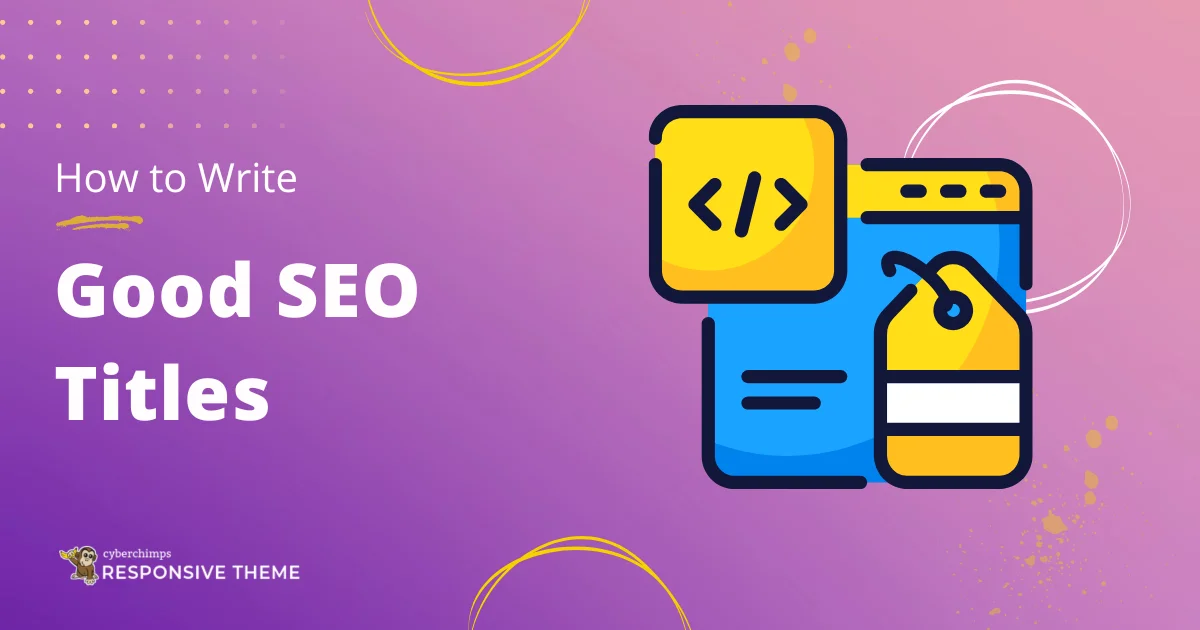Are you looking for examples of good SEO titles to improve your website clicks?
If you are searching for a better title for your website, your website might suffer from user ignorance.
I understand it’s really frustrating to put in time and effort to write content that ranks on Google but fails to get the deserved traction.
There is no sure-fire assurance of what will bring clicks, especially if your content is not already ranking in the top ten. However, SEO title optimization is among the most practical techniques, and the result can be calculated most practically.
This guide will help you understand everything in detail about SEO titles, including how to write one and examples of the best SEO titles.
Let’s get started!
What Are SEO Titles?

To begin with, let’s learn something basic, like what SEO titles are in practical terms.
SEO titles, aka meta titles, are the brief headlines or most precise summaries of the content of your website. It is displayed as a clickable link on search engines when someone searches for something relevant to your site.
It is a crucial element that decides whether a user will consider or ignore your website. If you are wondering how it’s just like if you own a resort no matter how beautiful your resort is inside, people won’t visit you if the entrance isn’t appealing enough.
With over 7.5 million pieces of content written and published daily, your content is likely to be lost or ignored. SEO titles act as simple yet intriguing headlines that welcome visitors to your website.
Importance of SEO Titles for Search Rankings
My team and I consulted with many SEO and SEM experts to understand how Google ranks its content.
Most of them shared one common insight: If your content gets clicks and users spend time on your website, it signals to the Google algorithm that your website is a valuable provider.
Google rewards this credibility in the form of improved rankings. Users mostly prefer easy accessibility. If your content is valuable and they can access it, it creates a significant source of traction.
Well, if you are wondering how this is relevant to the importance of SEO titles, it actually does create a big impact. Before this funnel of traction even gets built, the SEO title plays a major role. No matter how valuable your website or content is, it won’t help your business if it does not welcome users the right way.
- SEO titles are often the first things users see in search results. A compelling title can significantly build your website landing funnel.
- The search engine algorithm uses titles to understand the page’s content using the embedded keywords. This helps search engines categorize your page correctly, improving its chances of ranking higher for those terms.
- When a user is searching for information, he/she either comes to you or goes to your competitor. The relevance and curiosity generated by your SEO title determine whether he/she will visit your website or go to your competitor.
Summarizing all these points, a well-crafted SEO title can encourage users to click on your site, increase traffic, and convert potential business opportunities.
If the necessity of a good SEO title is clear to you, let’s understand what makes a good SEO title.
Five Characteristics of a Good SEO Title
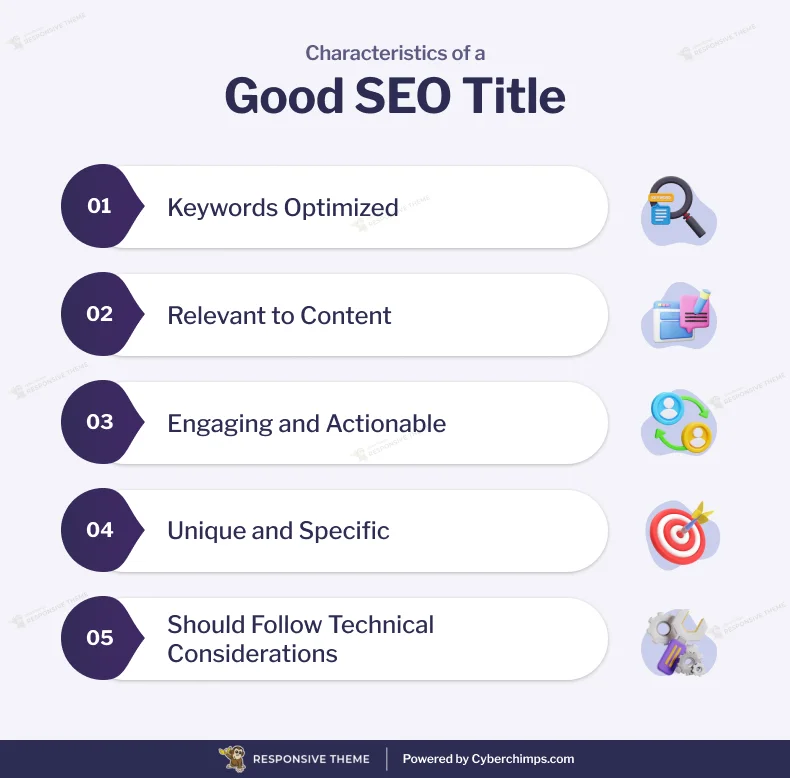
The most important characteristic of a website’s title tag should be its click-worthiness. You should create SEO titles that are click-worthy, not clickbait.
It should reflect the page’s intent within the permissible SEO title limit of 50-60 characters. While most users believe that creating an efficient SEO title involves just including keywords, it also involves balancing optimization and user appeal.
Essential characteristics that an SEO title must possess:
1. Keywords Optimized
Every page on SERP ranks for 100s or 1000s of variations of long-tail keywords. A good SEO title must involve a title that could result in multiple search variations.
While writing headings, it should incorporate power words from either of the five principles or maybe more than one all together:
- Depth (number of steps or detailed guide)
- Quantity (No. of roundups covered in the article)
- Speed (mention in heading how soon the content will help them solve their challenge)
- Freshness (Determined by the time you are writing i.e, you can mention the year or a time frame to make it intriguing)
- Brand (Mention established brand names for cult traffic.)
2. Relevance to the Content
A good SEO title accurately represents the page’s content. While misleading titles may initially drive clicks, they often lead to high bounce rates.
85% of top-ranking Google results (positions 1-5) include keywords in their titles that are exactly similar to users’ search intent. Titles with positive sentiment have a 4.1% higher click-through rate (CTR) than negative ones.
For example, if you write on fitness and your content is home workout tips, a Good SEO title for this would look like “10 Easy Home Workouts to Stay Fit in 2025”. While a misleading title will somehow appear like “The Ultimate Secret to Losing Weight Overnight”
3. Engaging and Actionable
The use of action-verbing language within SEO titles helps to improve user interaction significantly. Studies show that the use of power verbs such as “Discover,” “Learn,” or “Explore” generates urgency and direction for users, motivating them to click through.
For example, question words included within titles have been found to have a 15.5% click-through rate (CTR), as it generates curiosity among users and invites them to find out answers.
Moreover, using positive language in titles can result in a 4.1% greater absolute CTR than negative titles.
4. Unique and Specific
Creating distinct and descriptive titles enhances visibility and user engagement. A study by The SEO Project found that 35% of websites have duplicate title tags, continuously harming SEO performance.
Unique and specific title tags clearly define the content on website and help search engines understand relevance. Additionally, it sets right user expectations, that helps generate better click-through rates.
If you have content on SEO expertise, a generic user-ignored guide title mostly looks like “Learn SEO Basics,”. In contrast, an SEO title like “How to Master SEO for E-commerce Websites in 2025” will likely get most users’ attention.
5. Technical Considerations
Alongside the users’ intended specifics for an SEO title, it is necessary that while writing your SEO title, you do not miss out on technical considerations like:
- It should be between 50 to 60 characters to ensure it properly displays on SERPs.
- You should place the primary keywords used in the content toward the beginning for better visibility and relevance.
- Using natural conversational language can help in writing a better SEO title instead of cramming too many keywords
- If you have brand-specific content, adding your brand name at the end of the SEO title is advisable.
- Moreover, you should ensure the meta title is correctly set in the <title> tag and is not overridden by CMS settings.
How to Craft Effective SEO Titles
By now, you probably might have a clear idea of what mistakes you were making while writing SEO titles for your content.
So, to begin with a fresh start, let’s explore how to craft effective SEO titles from scratch.
Based on my learning and experience, I feel writing an effective SEO title is simple but not easy it involves research, creativity, and strategic planning.
I basically follow a three-step process while writing SEO titles for my content:
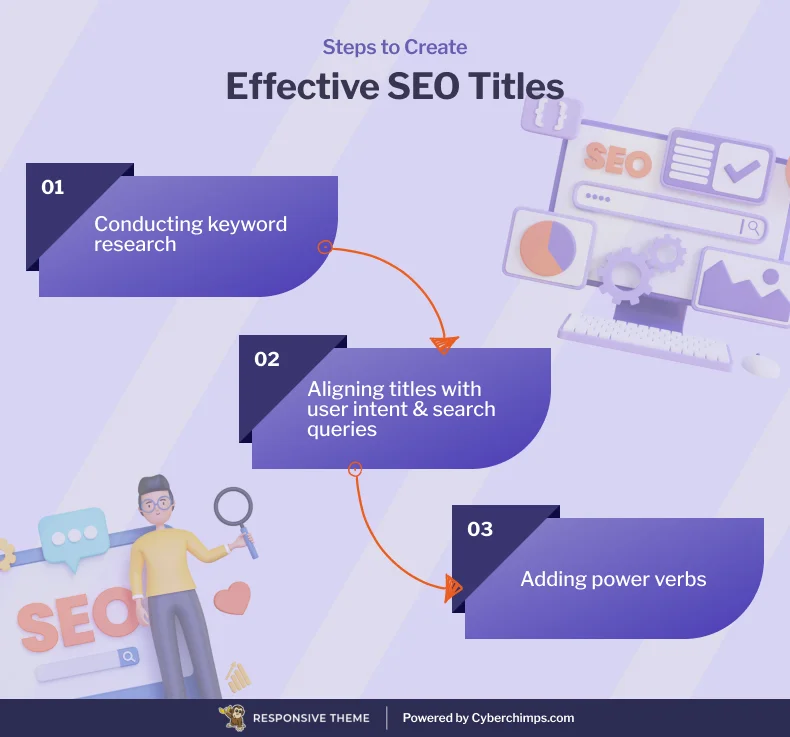
- Conducting keyword research
- Aligning titles with user intent and search queries
- Adding power verbs
While the process looks short, it involves sub-steps for each step. Let’s get into depth and understand each:
Step 1: Conducting Keyword Research
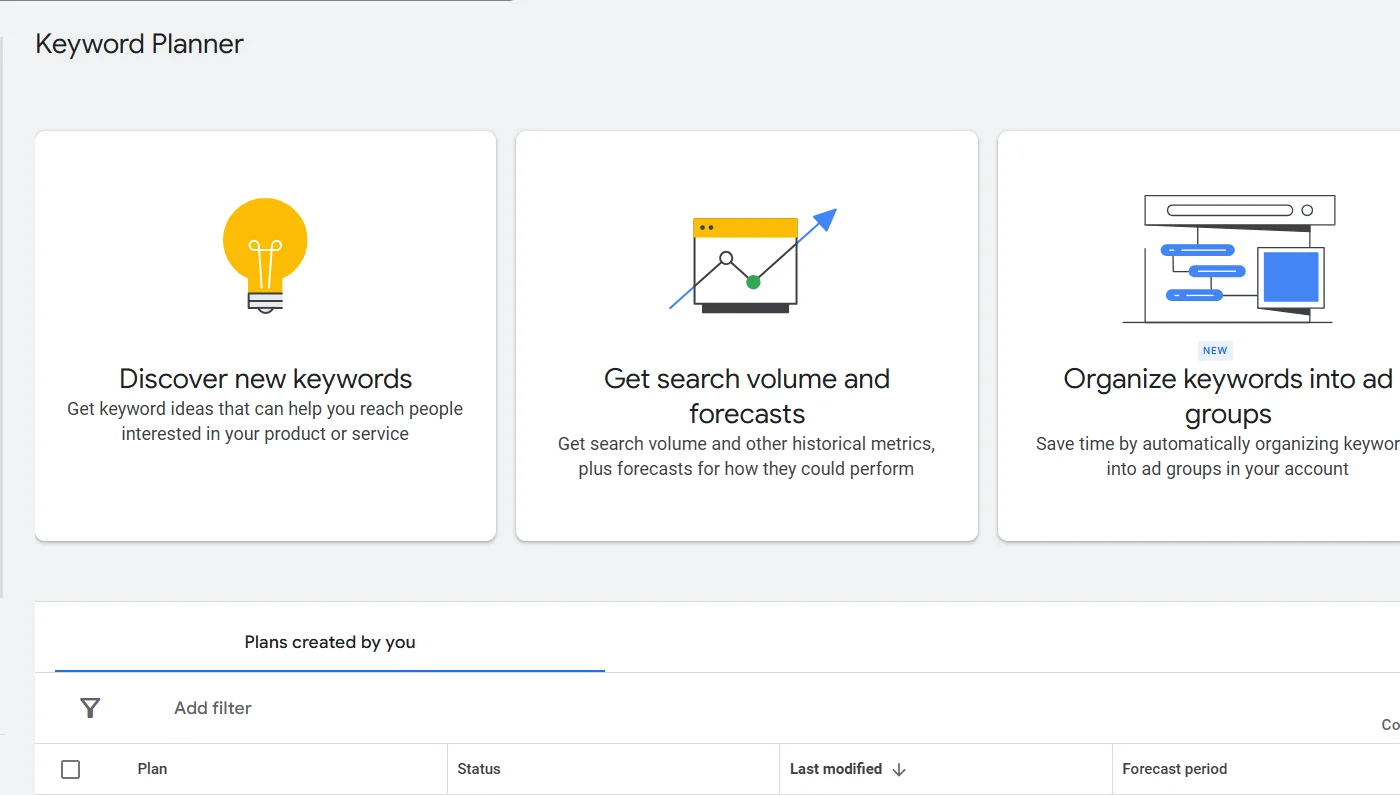
Powerful user searched and intended keywords form any search query’s basic fundamental. These queries usually involve short conversational requirements of mostly three to four words that users generally search.
To perform keyword research, I usually put myself in the user’s shoes and list relevant search terms that he/she may use to find this.
While if you use the search terms, it’s actually not enough. Search terms and keywords are kind of different. Search terms are usually what you think users might search, and keywords are what exactly is being searched.
You can use various keyword research tools to extract keywords from those search terms effectively. I mostly prefer Google Keyword Planner, which, when I enter a search term, gives me a list of keywords users search for and specific insights into each.
For example, while writing for this guide, one of my search terms was “seo title examples,” and the keywords and insight I got using the tool are visible below:
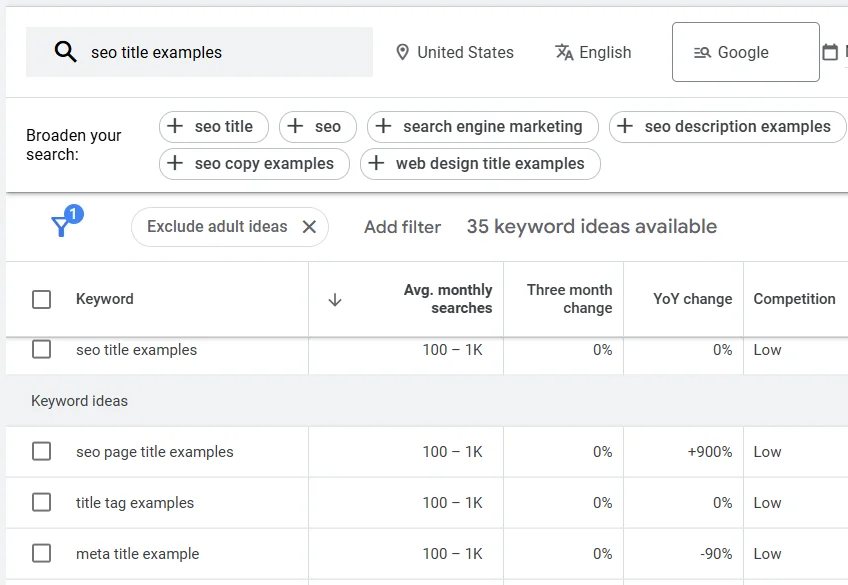
I also examine the titles of top-ranking pages for the targeted keywords of other articles ranking for similar or the same keywords. This helps me get ideas and insights into popular formats and terms used.
Step 2: Aligning Titles with User Intent and Search Queries
Once I had my keyword strategy, I began experimenting with phrases that aligned with user intent and queries.
When a user searches for anything, it is fueled by a purpose in theoretical terms, it is known as user’s search intent. These search intents can be categorized into three broad categories that determine the next step of the user:
1. Informational: When a user’s search intent is informational, he looks for some specific or broad information and leaves the website when he gets it.
If the information he got from you is valuable, he will most likely visit your website when he searches for something else and your website pops up.
Example: What is an SEO title? Characteristics of SEO titles
2. Navigational: When a user is stuck in between a process or unable to understand what is next or why he is failing his searches, it mostly turns navigational as he needs help and will follow the process your content provides.
These users are highly likely to come directly to your site when they get stuck in any similar process, which could turn into good business.
Example: How to write an SEO title? Steps to write an SEO title?
3. Transactional or Commercial: Users with this search intent look forward to purchasing directly from the best value provider.
If you rank for their query, which offers a good value and allows easy access, you can generate business directly.
Example: Cheap SEO solutions, Affordable SEO services provider
Once you understand your users’ intent and which category of users your content will add value to, you can frame the SEO title with the keywords matching their query.
My intention for this guide was simply navigational; however, it also serves informational intents.
Step 3: Adding Power Verbs
Once you put the researched keywords, aligning them with user intent your SEO title gets almost ready.
To make my SEO titles more powerful, I imply an additional strategy that proven to get better click-through rates on my content.
I add relevant, powerful verbs to the SEO title. This helps me leverage users’ emotions to trigger the action I aim for.
Superlatives and power words like “Best”, “Ultimate,” “Proven,” “Essential,” “Step-by-Step,” and “Comprehensive” evoke curiosity, urgency, or excitement in readers’ minds.
While adding power verbs, I often add some bonus strategy that includes mentioning the current year or phrases like “New,” “Updated,” or “Latest,” which emphasize freshness.
When the SEO titles of my content are ready, I often use these as prefixes or suffixes to make them more impactful.
Helpful Tools for SEO Title Optimization
While the steps and recommendations mentioned throughout this article will help you effectively optimize SEO titles using SEO tools can further improve the process.
1. Google Search Console: Used by almost every marketer, content writer, and SEO expert, this free Google tool is my favorite. It analyzes user search patterns and offers insights on the keywords that drive website traffic.
When writing your SEO title, you can use this tool to find out the long tail keywords that are most searched and directly use them.
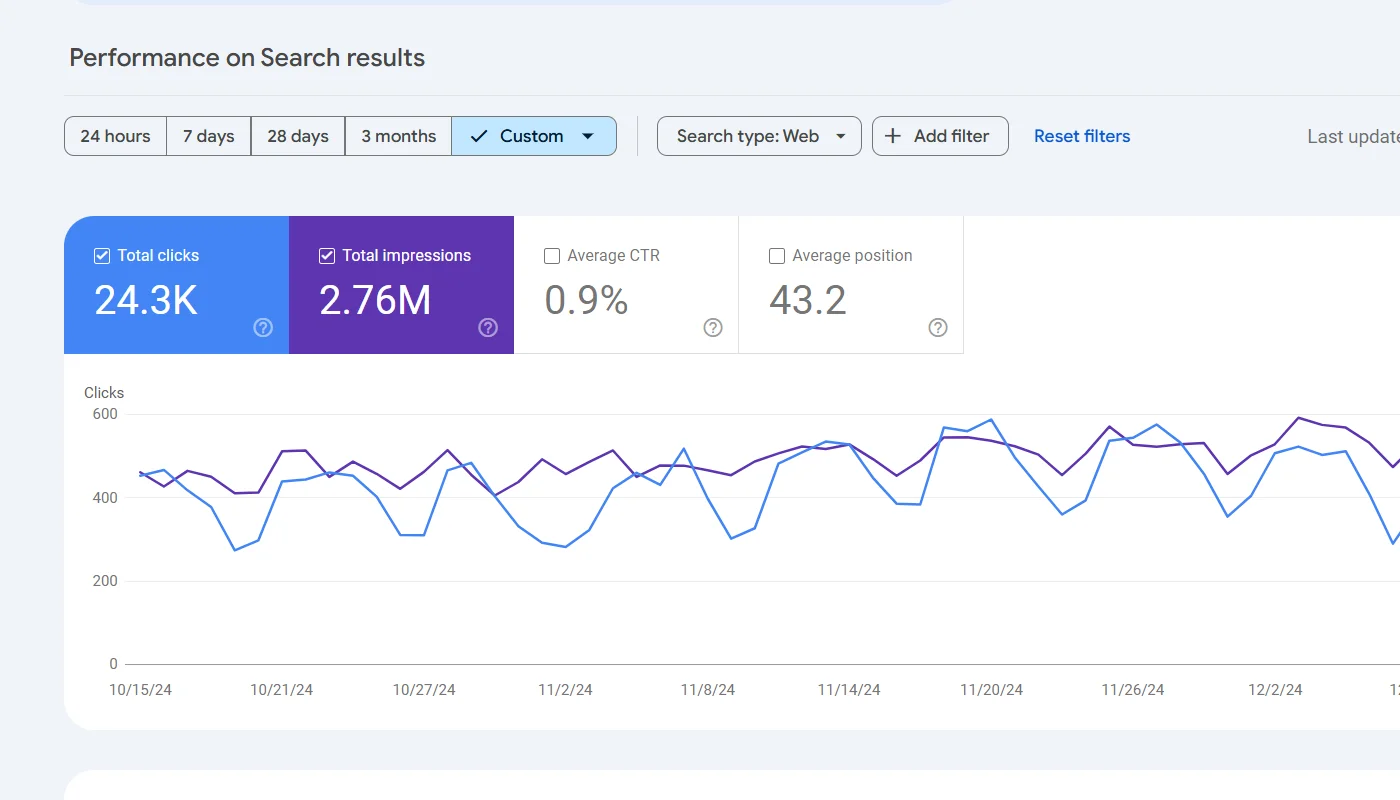
2. CoSchedule Headline Analyzer: Every content you write impacts the reader, either positively or negatively, based on the SEO factors, language quality, and insights.
This tool helps you evaluate the quality of SEO titles based on the readability and emotional impact they may create. You can continuously work on your SEO headlines and evaluate their impact with this tool till you get a good score.
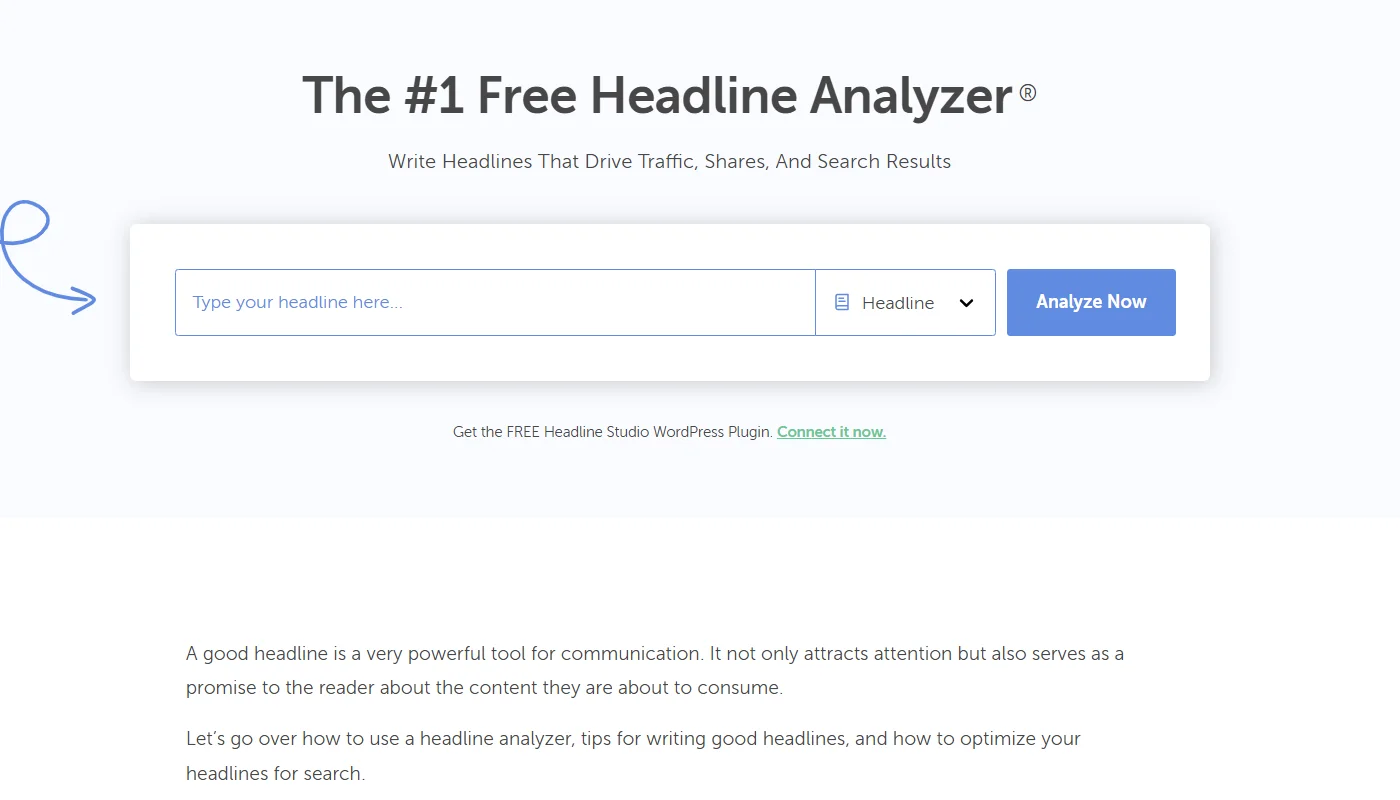
3. Yoast SEO: If you use WordPress, Yoast SEO can prove to be the most powerful tool for your website content.
It is a plugin that integrates with your website’s backend. Whenever you write content, it provides real-time feedback on your SEO and the site content’s readability.
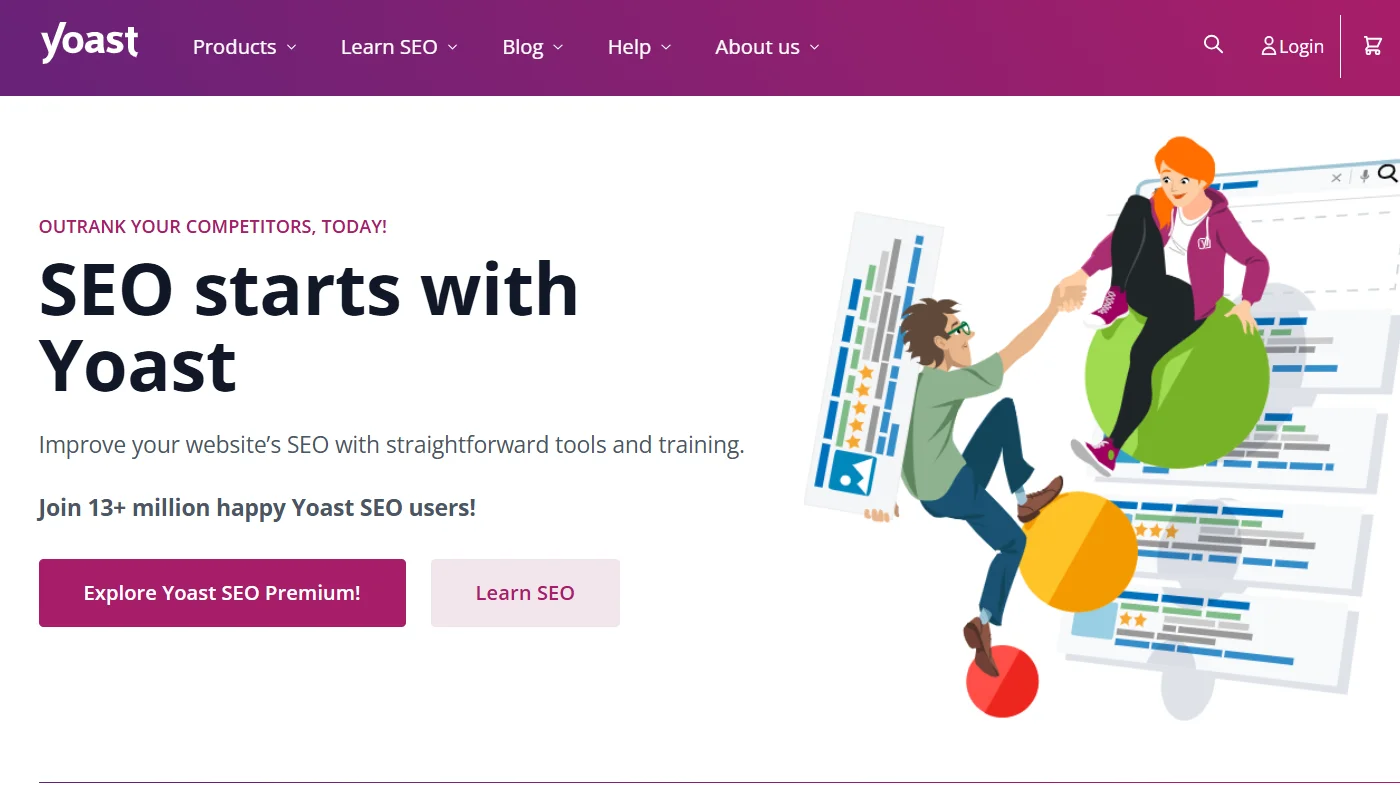
4. SEMrush Title Generator: If you are new to content creation, this tool helps you generate multiple SEO-friendly title ideas based on your target keywords.
All you need to do is just enter the targeted keyword in the search panel and the tool crawls the web, gathering information in the form of different searches and gives you ideas for SEO headlines, questions searched, and relevant topics.
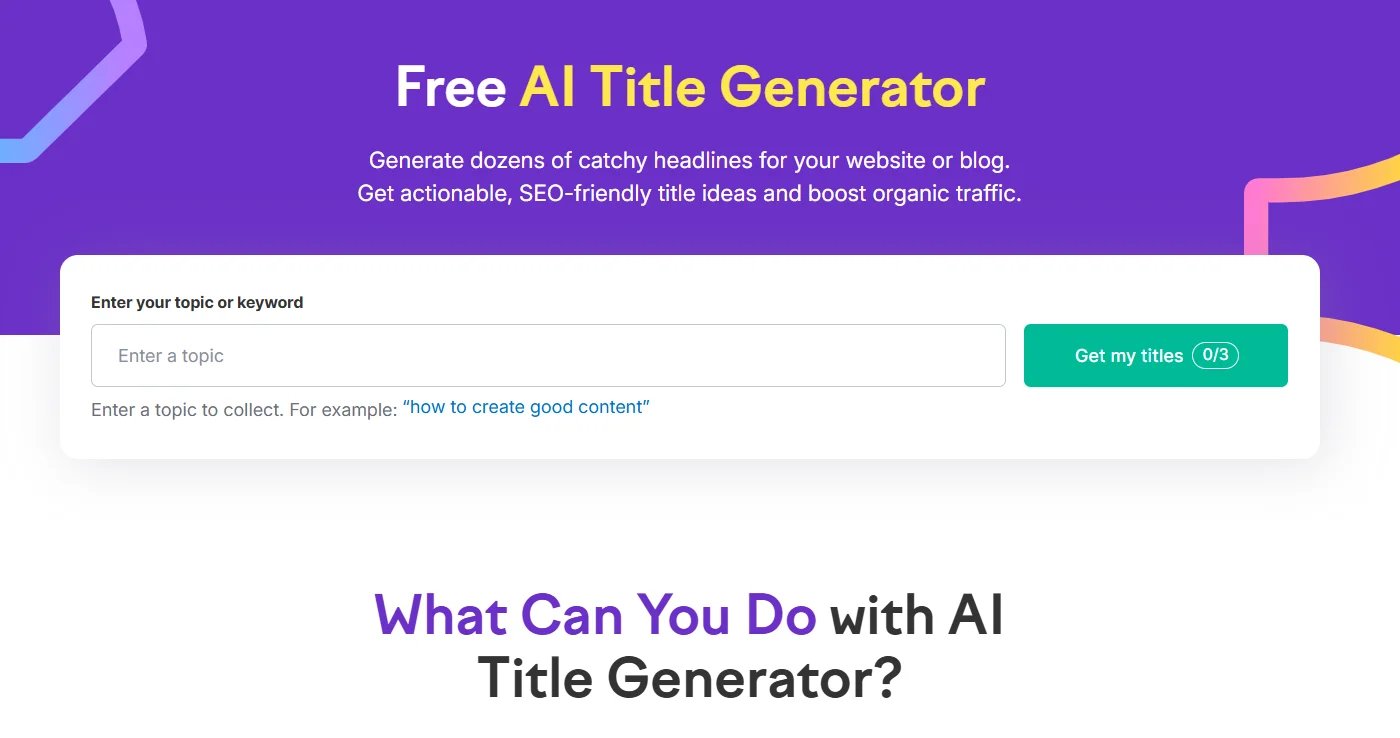
5. Optimizely: Powered by AI and strong data analytics, Optimizely is a digital experience platform that allows you to experiment and personalize.
Using this tool, you can A/B test your SEO titles. You can create multiple versions of a title and measure the results generated by each based on existing data.
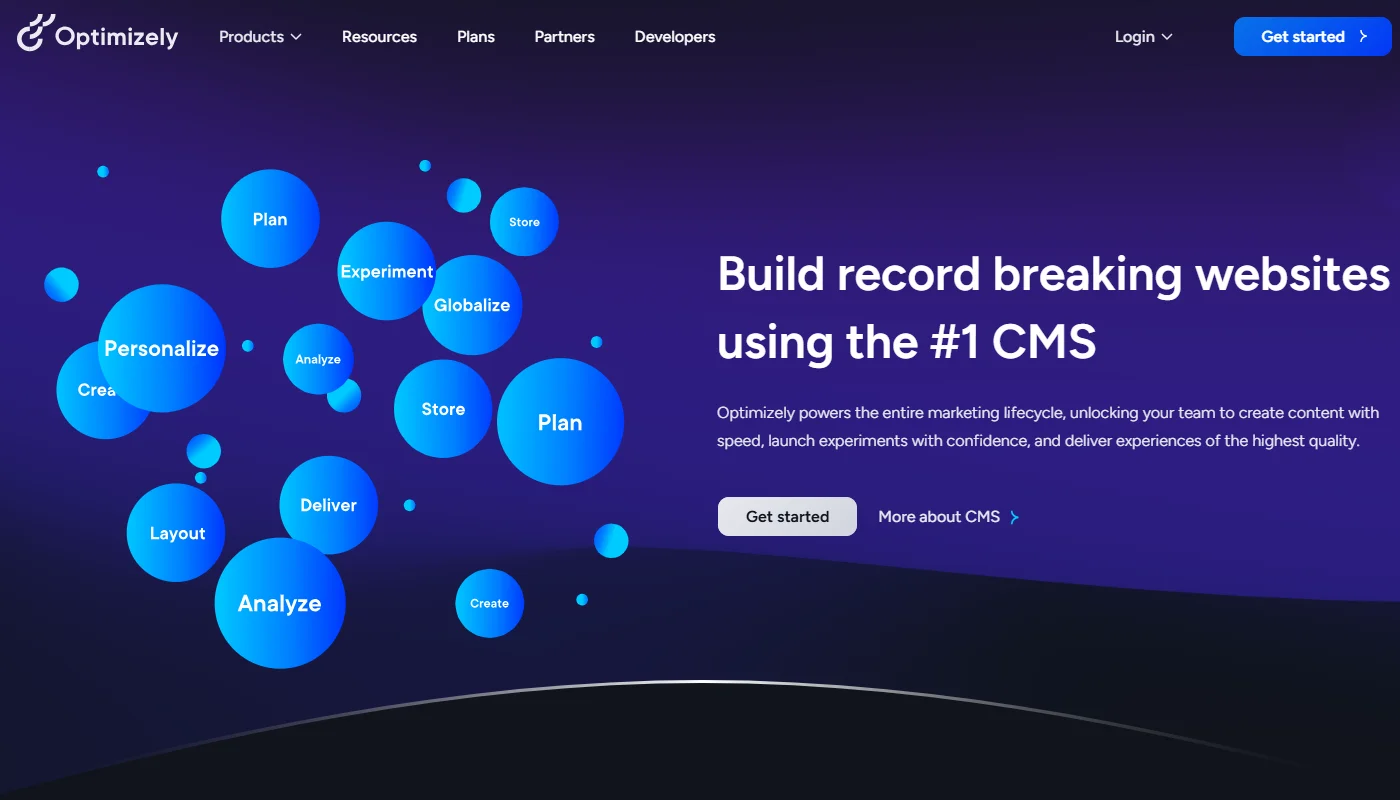
Tips for Crafting SEO Titles
Some other pro tips that are recommended for you should abide by while crafting SEO titles are:
- Stay within the Character Limit: To avoid truncation on SERPs, ensure your titles are between 50 and 60 characters.
- Avoid Clickbait: While creating curiosity is essential, ensure your title delivers on its promise.
- Focus on Clarity: Avoid jargon or overly complex language. Your title should be easy to understand at a glance.
- Test and Refine: Monitor your SEO titles’ performance regularly and adjust based on user behavior and search trends.
3 Instances of Changes In SEO Titles and Results (For Our Website)
Well, now you might have a clear idea of SEO titles, the characteristics of good SEO titles, and the do’s and don’ts.
While Cyberchimps is also among popular digital brands, we (the backend team) put continuous efforts into improving the SEO of our website. These also include instances where we have changed the SEO titles, which has yielded significant results.
Let’s further discuss a few which helped us significantly:
1. Changing Keywords Based on Change in Volume
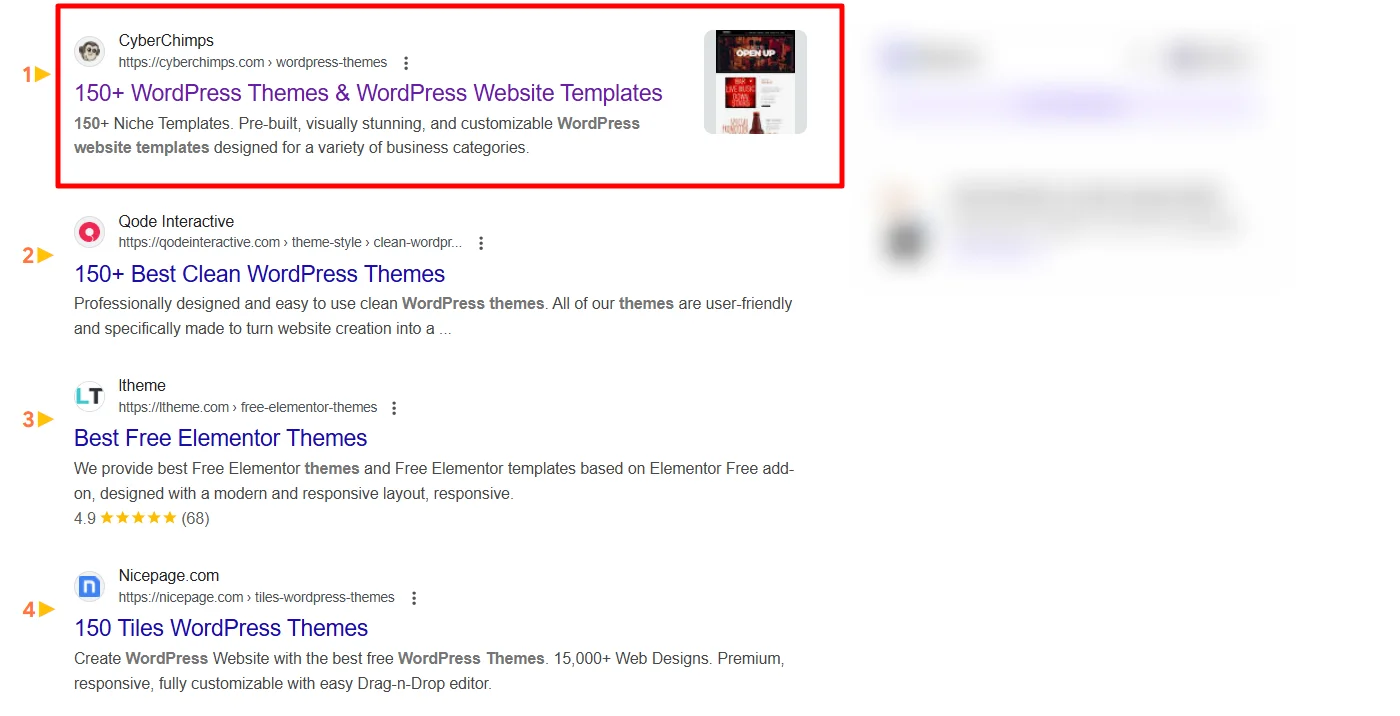
We have a template page on our website that showcases over 150 website templates for Elementor and Gutenberg WordPress pages in different niches.
Initially, the site title represented the page as 150+ Starter Templates, giving us an average of 200-300 impressions daily. However, traffic on the page started to drop after 6 months.
We found that the decrease in popularity and volume of searches for the keyword “starter templates” was due to the keyword’s better volume. Instead, the keyword “WordPress website templates” ranked higher.
After this, we changed the SEO title to “150+ WordPress website templates” – this slight change in the site title’s keyword is significant. In addition, this also helped us improve our rankings for our product-relevant keywords.
2. Adding Numbers in the Title
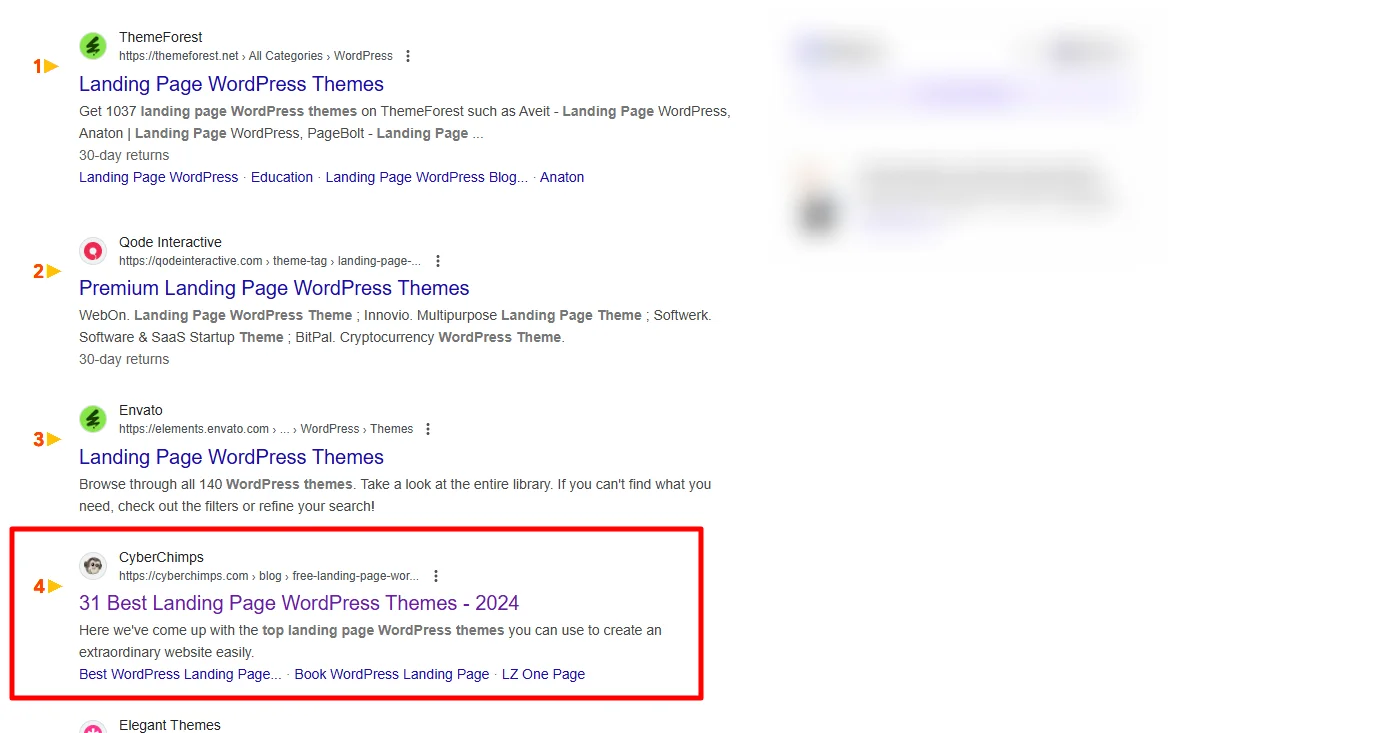
Another crucial instant was when a simple change in the SEO title helped us get a drastic change in website traffic by adding numbers.
Given the prevailing dominance and increased popularity of searches related to landing pages, our team has specifically created a blog showcasing the best themes users might use to create landing pages.
While the article’s content was informative, it initially failed to gain traction. In our update, we added a few numbers to the site title.
Our team changed the site title from “Best Landing Page WordPress Themes” to “31 Best Landing Page WordPress Themes—2024.” This minor edit seamlessly increased the number of searches and article rankings, almost doubling the daily traffic results.
3. Addressing The Pain Point Directly

Addressing the pain point directly in the site title is one of the most overlooked but effective SEO approaches.
Users often directly search for their primary issues on search engines, looking for answers that help them get straightforward solutions.
Our content team has been using this practice to prepare articles and documentation. A common insight we have gained from all these articles is that they have a higher click-through rate than our other articles.
This practice not only allows users to get straight answers to their questions but also creates authority, which is often rewarded by Google’s algorithm that helps your content rank as AI overview.
Best SEO Title Examples for Different Niches
Well, now you might have got a clear idea of and about SEO titles. However, if you are new, you might wonder what SEO title you should use if you have your website under a different niche
Always remember that when crafting SEO titles for any niche, blending user intent with keyword relevance is essential while ensuring the title resonates with your audience.
Let’s explore examples across niches with insights on what to consider while writing for each.
1. Health and Wellness Titles
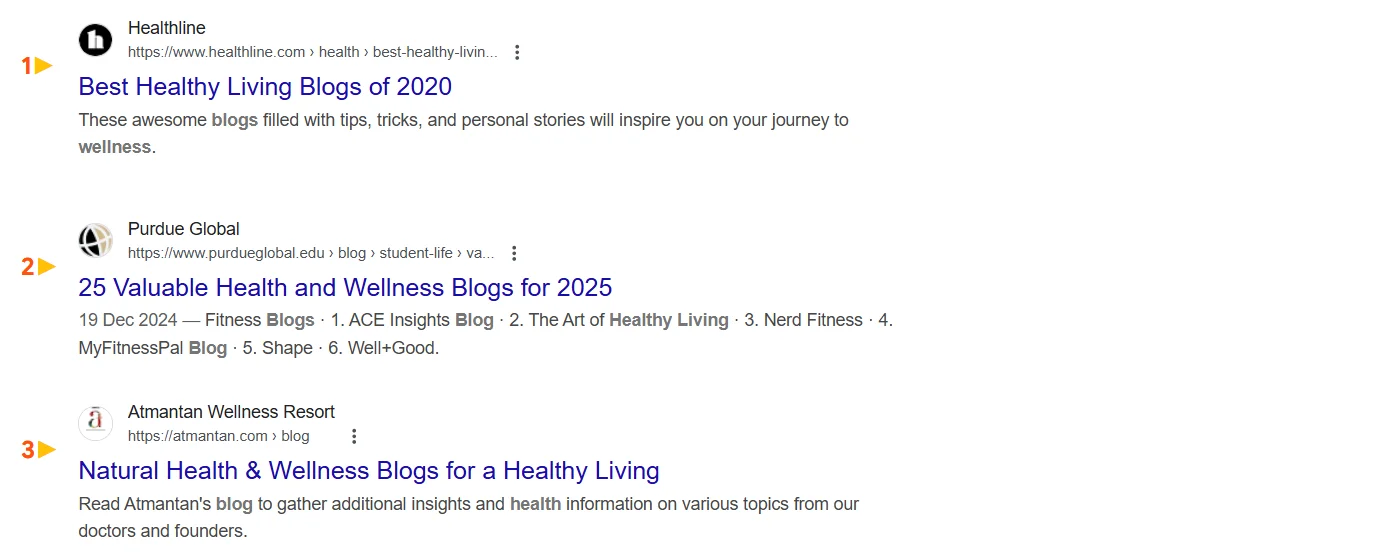
Clarity and trust are vital in the health niche. Ensure the title provides actionable advice and avoids exaggerated claims that might mislead the audience.
Also, when writing for health, focus on actionable steps and always ensure the title conveys credibility. Avoid sensational claims that might deter trust.
Example:
- 5 Superfoods to Boost Your Immunity Naturally
- 10-Minute Workouts to Burn Fat Without a Gym
- Beginner’s Guide to Intermittent Fasting in 2025
- How to Sleep Better: 7 Science-Backed Tips
2. Technology Titles
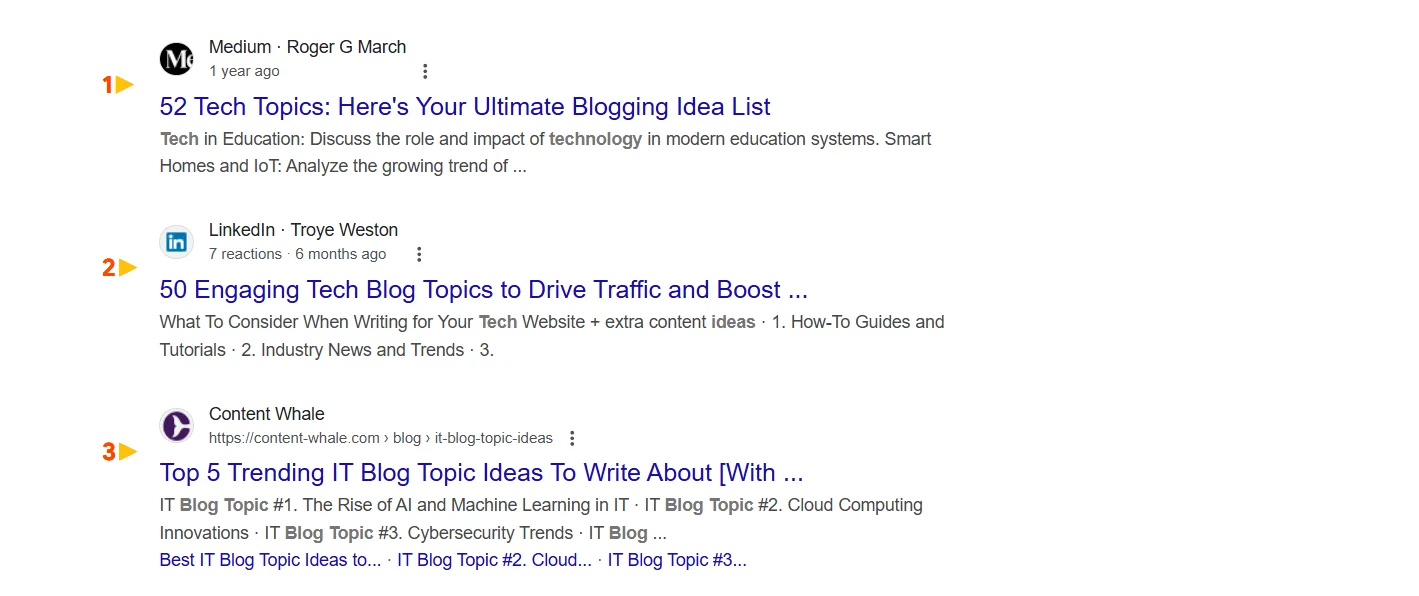
In tech, being specific is the key. The title should highlight benefits and provide a clear value proposition to attract tech-savvy readers.
Examples:
- How to Build a Gaming PC on a Budget: Step-by-Step Guide
- The Pros and Cons of Switching to Cloud Storage in 2025
- Top 7 Productivity Apps Every Remote Worker Needs
- How to Troubleshoot Common Laptop Issues Like a Pro
3. Travel and Tourism Titles

Travel titles should evoke wanderlust while offering practical advice. Adding elements like locations or tips can make them more compelling.
Your site title should focus on sparking curiosity and providing value in this niche. Readers want exciting options or practical advice for their next trip, so your titles should reflect that.
Examples:
- 10 Hidden Gem Destinations to Visit in Europe in 2025
- How to Plan a Perfect Weekend Getaway on a Budget
- The Ultimate Guide to Solo Travel in Asia: Tips and Tricks
- 5 Underrated Beaches in the Caribbean You Must Visit
- How to Plan the Perfect Road Trip: Essential Checklist
- Top 10 Luxury Resorts in the Maldives for 2025
4. E-commerce Titles

For e-commerce, the focus should be on highlighting savings, quality, and relevance to the customers’ needs. Use urgency.
Also, using action-oriented language and keywords like “best deals” creates an urgency to attract shoppers and drives clicks.
Examples:
- 50% Off! Top Gadgets You Need for Your Home Office
- Why This Kitchen Gadget Is a Must-Have for 2025
- How to Choose the Perfect Gift for Tech Lovers
- Top 15 Amazon Deals You Shouldn’t Miss This Week
- Affordable Fashion Trends to Upgrade Your Wardrobe in 2025
5. Education Titles

If you are writing titles for pages related to education, it should emphasize guidance and empowerment, making complex topics seem approachable.
Further, if it’s a study tip or course recommendation, ensure the title is direct and encouraging.
Examples:
- How to Learn a New Language in 30 Days: A Beginner’s Guide
- Top 10 Scholarships for International Students in 2025
- 5 Mistakes to Avoid When Writing Your College Essay
- How to Master Data Science: Essential Resources for 2025
- Top Study Apps to Help You Stay Focused and Organized
6. Finance and Investment

Financial topics require a tone of authority and reliability. Ensure the title addresses a common pain point or goal, such as saving money or starting investments.
Examples:
- How to Create a Monthly Budget That Works
- 7 Smart Ways to Save for Retirement Starting Today
- The Best Credit Cards for Small Business Owners in 2025
- How to Invest in Real Estate with Minimal Risk
- Top 5 Budgeting Apps to Manage Your Money in 2025
These few suggestions might help if you plan to write content for your pages in the following domains.
You can also use the guidelines and recommendations mentioned earlier to create a site title as per your requirements.
FAQ
An SEO title example is a keyword-rich, engaging headline like: “Top 7 SEO Strategies for Small Businesses in 2025.” It includes primary keywords, concise language, and action words to attract clicks and improve search visibility.
Your SEO title should include a primary keyword, concise language, and actionable words like “How to” or “Best.” Add numbers or power words for engagement while aligning with user intent and search queries.
Good SEO title creation blends keyword optimization, user intent alignment, and engaging language. Use clear, concise titles with power words or numbers, refine them regularly through testing, and ensure they accurately represent your content.
Conclusion
SEO titles are vital for enhancing search visibility, driving traffic, and improving user engagement.
Crafting concise, keyword-optimized, and engaging titles can significantly boost your content’s performance.
Effective SEO titles should align with user intent, include relevant keywords, and use actionable language to capture attention. Incorporating power words and numbers, and solving user pain points further enhances their effectiveness.
Further, if you liked this article, you can also consider reading:
- Best Chrome Extensions To Boost Productivity
- Best CDN Providers To Choose
- Best Keyword Research Tools You Must Know About
Grab the Cyberchimps Responsive Theme to create a responsive website for any niche.

